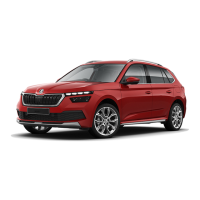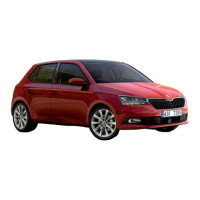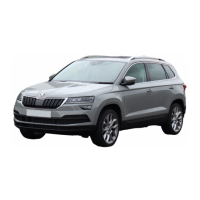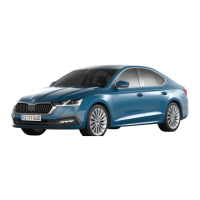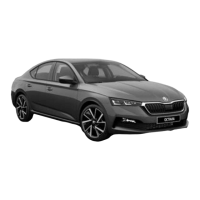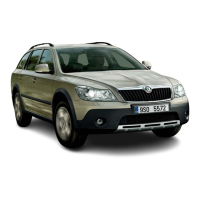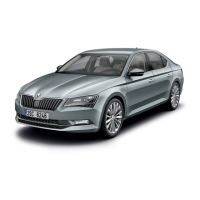▶
Avoid using snow chains on the temporary spare
wheel.
Driving with a loaded roof rack
When transporting objects on the roof rack, the ve-
hicle’s driving behaviour changes.
▶
Adapt your speed and driving style to this.
Towing a trailer
The vehicle’s handling characteristics change with a
trailer. The assistance systems may behave dierent-
ly.
▶
Drive more slowly, excessive speed can lead to loss
of control of the vehicle.
▶
Keep a larger distance from the vehicle in front.
▶
Do not exceed the max. vertical load and the per-
missible trailer load.
Driving through water
There must be no water ingress into the vehicle sys-
tems e.g. into the engine’s air intake system!
▶
Therefore, determine the water depth before driv-
ing through water. The water level must not ex-
ceed the lower edge of the lower beam.
▶
Drive at max. walking speed. Otherwise, a wave
may form in front of the vehicle, increasing the wa-
ter level.
▶
Never stop in the water, do not drive backwards
and never stop the engine.
Is something wrong?
▶
Pay attention to changes in vehicle handling.
▶
If in doubt about safety, stop driving and seek the
help of a specialist garage.
▶
Unusual vibrations or the vehicle ‘pulling’ to the
side may indicate a puncture.
▶
If tyre pressure loss is very quick, try to stop the
vehicle carefully without heavy steering or heavy
braking.
▶
Immediately remove foreign bodies stuck in the
tyre tread.
▶
Do not remove foreign objects that have penetra-
ted into the tyre. Check the tyre pressure and seek
the help of a specialised garage.
▶
Immediately remove any objects jammed under
the oor of the vehicle. These can damage the ve-
hicle or ignite and cause a re.
Stop the vehicle safely!
A vehicle that has not been secured may roll away
and cause accidents.
▶
For parking, look for a place with suitable ground.
Do not park the vehicle on ammable materials
such as dried leaves, spilt fuel. Hot vehicle parts
can cause a re.
Carry out the following activities in the
specied or-
der when parking.
›
Stop the vehicle and keep the brake pedal de-
pressed.
›
Secure the vehicle with the parking brake.
›
For vehicles with an automatic gearbox, put the se-
lector lever in the
position.
›
Turn o the engine.
›
For vehicles with manual transmission, engage
1st gear or reverse gear.
›
Release the brake pedal.
Exiting the vehicle
Do not leave children unattended in the vehicle!
▶
Children may injure themselves when handling the
seats, releasing the parking brake etc.
▶
In emergency situations, children are not able to
leave the vehicle on their own or help themselves.
▶
At very high or very low temperatures, there is
danger to life!
▶
When locking the vehicle, the SAFE function
switches on. As a result, no doors or windows can
be opened from the inside. Turn o the SAFE func-
tion if people are left behind in the locked vehi-
cle » page 22.
Deviating weather conditions
If you wish to operate your vehicle in countries with
dierent weather conditions from those specied,
please contact a ŠKODA partner. They will advise
you if certain precautions need to be taken to ensure
the full functioning of the vehicle or to prevent dam-
age (e.g. coolant, 12 volt vehicle battery replace-
ment, etc.).
Emergency call
What you should be mindful of
WARNING
Availability of a mobile network is indispensable for
establishing a connection to the emergency number.
WARNING
This emergency service is only available in some
countries.
WARNING
If the vehicle is located in an area without a function-
ing emergency call system infrastructure, no vehicle
data shall be transmitted to the emergency call cen-
tre.
19
Correct and safe › Stop the vehicle safely!
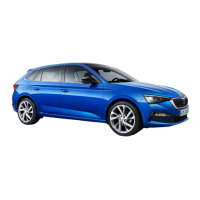
